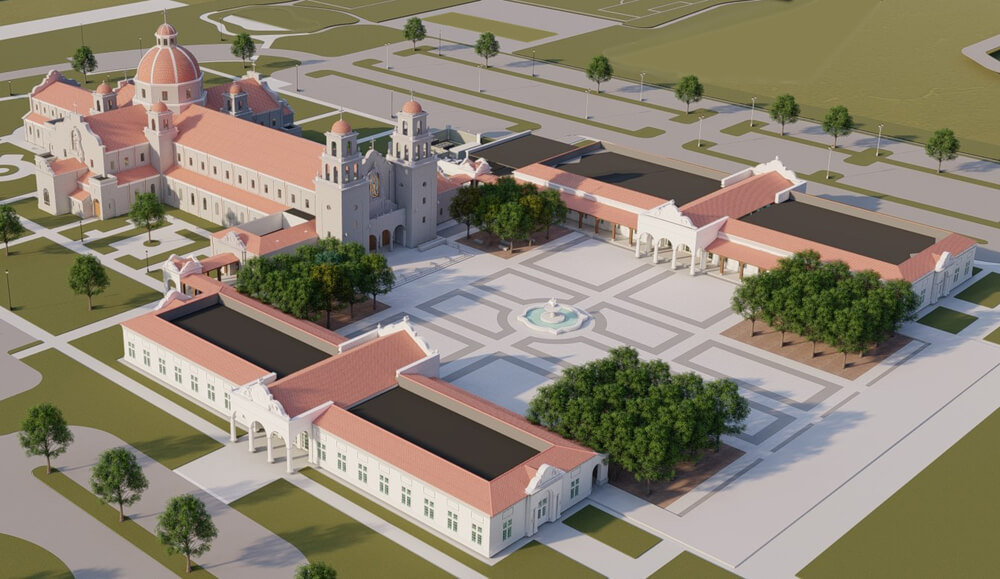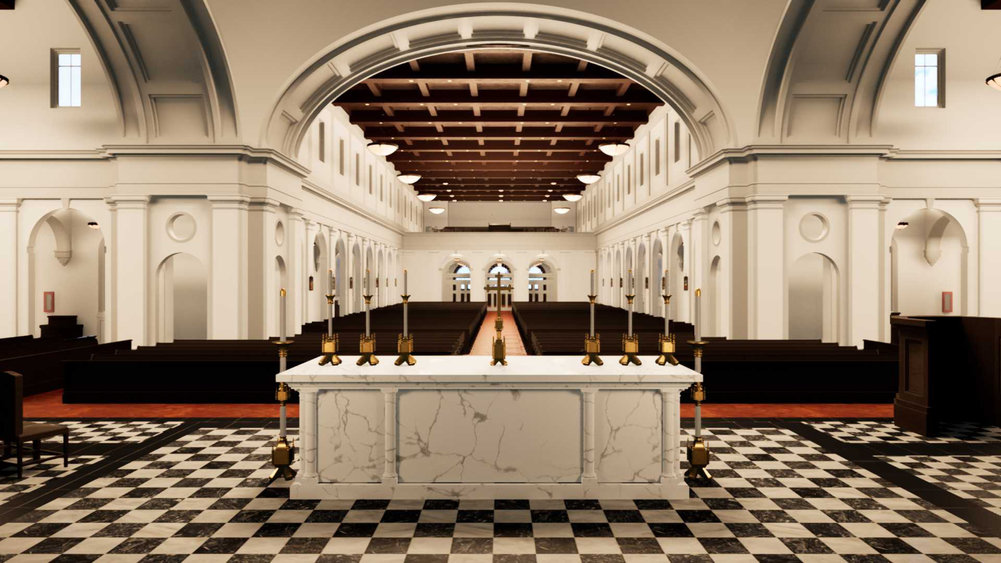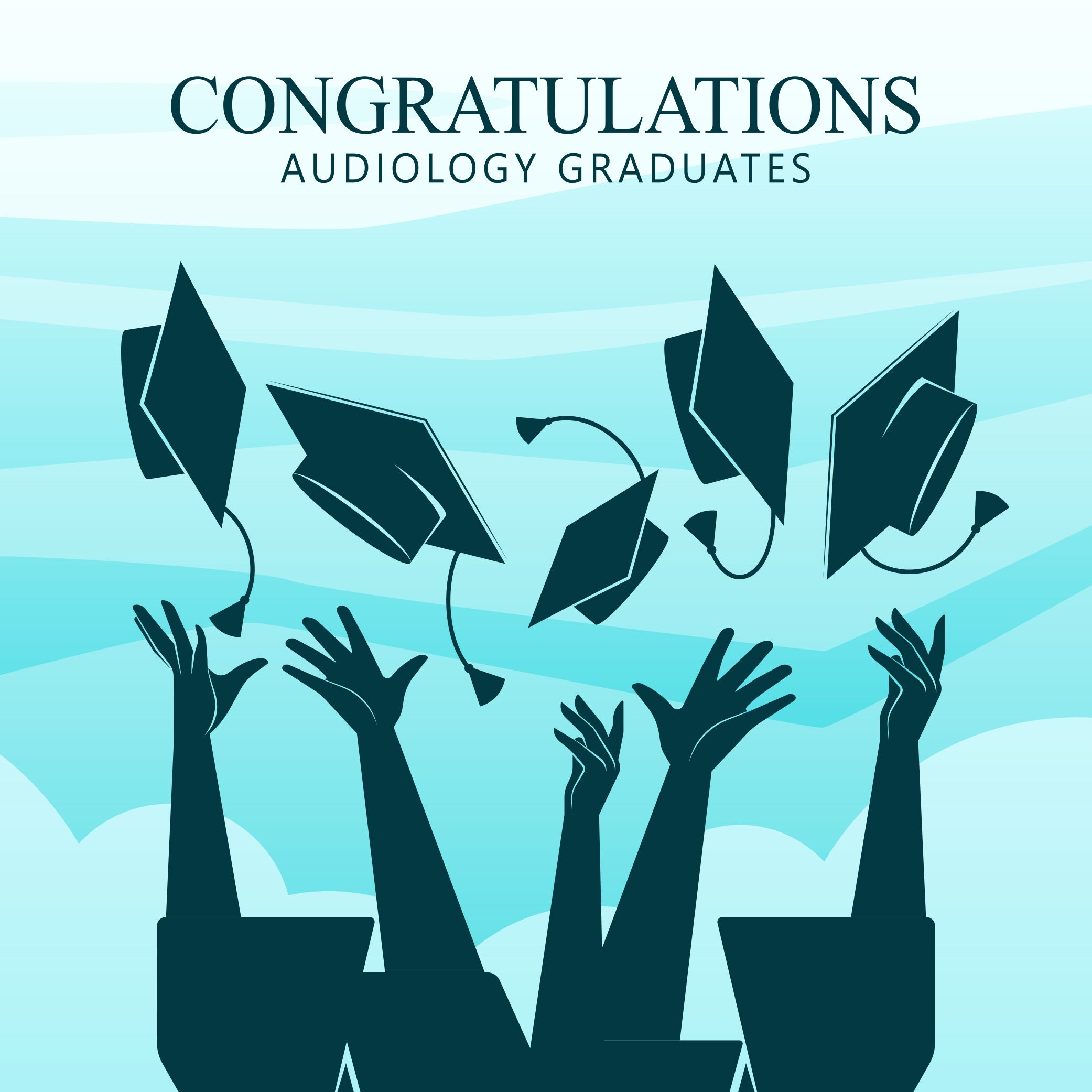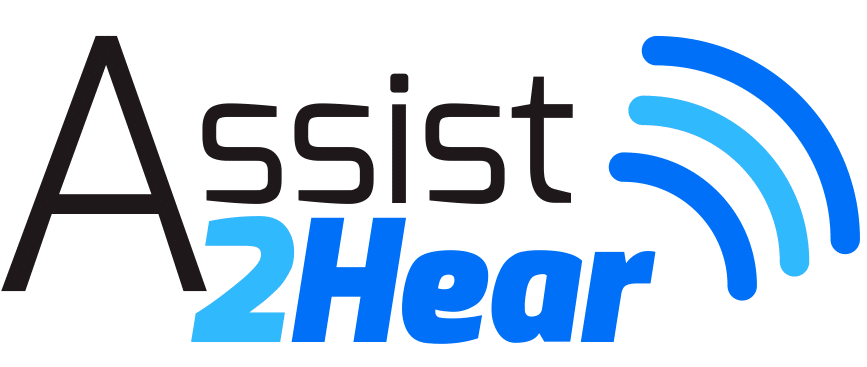
Jun 28, 2021 | Catholic Church Hearing Loops, Hearing Loops in Churches, News, Oklahoma Hearing Loops
Hearing Loops at New Catholic Shrine Site
Oklahoma Catholics with hearing loss will have the best sound in the house when they worship at the Blessed Stanley Rother Shrine next year. The site will house a 2,000 seat Catholic church, the largest in Oklahoma, as well as the Blessed Stanley Rother shrine and an educational complex. In addition to being the largest Catholic church in Oklahoma, the church and chapel on the shrine site will also include induction hearing loop technology for worshipers. The hearing loop systems will bring the Word of God directly to the ears of Catholic worshipers with hearing loss and eliminate the echo, reverberation, and ambient noise that often make hearing in church extremely difficult.
Why Catholic Churches Need Hearing Loop Technology
Traditionally, Catholic churches are beautifully cavernous structures with high ceilings and hard surfaces. Unfortunately, the construction of these spaces also causes sound to bounce, a factor that no amount of money spent on a sound system can overcome for a person with hearing loss. In these types of spaces, the ability to hear the Word clearly and intelligbly is nearly impossible for people with hearing loss unless a hearing assistive technology, such a s hearing loop, is utilized. With hearing loop technology, all of the peripheral sounds of a space are filtered out and the sound from the audio system comes directly to the user’s ear. With a telecoil-enabled hearing aid, the Word of the Lord comes directly to their hearing aid wearer’s ear, as clearly as if the Father was sitting on their shoulder giving the sermon! The user simply needs to switch their own personal hearing aid to the telecoil program in order to access the technology – there is no need for additional equipment. If a user does not have a telecoil-enabled hearing aid, then utilize a receiver, however, most people enjoy the system by simply using their own hearing aids.

Blessed Stanley Rother Catholic Church conceptual, courtesy of the Archdiocese of Oklahoma

Blessed Stanley Rother Catholic Church conceptual, courtesy of the Archdiocese of Oklahoma
The History of the Blessed Stanley Rother
Father Stanley Rother was born and raised in Okarche, Oklahoma in 1935. He joined the priesthood in 1963, and in the 1970s brought the Word to worshipers in the parish of Santiago Atitlan, Guatemala. While preaching in Guatemala, a civil war between the militarists and guerillas killed thousands of Catholics. Despite the threat to his safety, Father Rother continued to teach the Word and educate the people of Guatemala. In 1981, Father Rother was executed for his refusal to abandon his people in the time of war. He is the first martyer in the United States and the first U.S.-born priest to be beatified, according to the Archdiocese of Oklahoma. His heart remains enshrined in Guatemala to this day. Visit the website of the Archdiocese of Oklahoma at https://www.archokc.org/stanleyrother for his full biography.
Hearing Loops in Oklahoma Catholic Churches
Hearing loops are in many Catholic churches in the Oklahoma City corridor, including St. Thomas Moore in Norman, Holy Spirit in Mustang, and St. Eugene’s in Oklahoma City. When in the Tulsa area, Catholics with hearing can enjoy the Word through hearing loops located at the Catholic Church of St. Mary or Holy Family. Assist2Hear is the installer for all Oklahoma hearing loops listed, with the exception of Holy Family. For more Oklahoma hearing loop locations, click here .
Since 2010, Assist2Hear has been a leading national installer of induction hearing loop systems throughout the U.S. If your church would like a quote on a hearing loop, email us at info@assist2hear.com. For more information on how hearing loops can help people in your church better hear the Word, please visit our blog post Hearing Loop Systems in Churches.
For more information on the Blessed Stanley Rother Shrine, please visit the Catholic Diocese of Oklahoma’s dedicated page at https://archokc.org/shrine.

Jun 21, 2021 | Preventing Hearing Loss
Fireworks are fun but the can also cause hearing loss.
As the 4th of July approaches, plans for fireworks and festivities abound. Even though a huge part of the fun of fireworks is their explosion and the sound it makes, it is incredibly important to take safety precautions when setting them off. Fireworks, as well as other loud noises, can be extremely dangerous to one’s hearing. If not carefully enjoyed, fireworks can cause hearing loss that will last a lifetime. The good news is that with two simple considerations, you can prevent hearing loss this 4th of July.
Distance
The closer you are to the fireworks display, the louder it is going to be. While it is fun to where the action is, it is also important to remain a safe distance from fireworks to minimize the sound and potential for damage to hearing. According to the World Health Organization, a safe distance from fireworks for an adult is approximately 30 to 45 feet. Be careful though because the safe distance for children is much higher; children need to be at least 150-180 feet away to minimize the possibility of hearing damage due to fireworks. To put that into perspective, 94 feet is the length of an NBA-size basketball court.
Wear Ear Protection
Explosive sounds, like firecrackers, are even more hazardous to your hearing than other loud noises. When igniting fireworks, it is incredibly important to wear ear protection. A variety of ear protection options exist, from cheap foam earplugs available at the gas station to midrange and high-end noise-canceling headphones. Headphones on their own are generally not recommended unless they cover the ears in their entirety. If noise-canceling functionality is not available, it is recommended to use a foam earplug, in addition to the headset. Oh – and we forgot to mention using one’s noise-canceling Airpods works great too!
Resources for Hearing Loss
If you need help due to a hearing loss incident with fireworks or are simply experiencing hearing loss in general, there are places that can help. A simple Google search can locate a local audiologist who can provide a hearing test to quantify how much hearing loss is present and what to do next. In many cities, there are chapters of the Hearing Loss Association of America (https://www.hearingloss.org), which can connect people with hearing loss to local resources, as well as provide a wealth of information and support for people experiencing hearing loss.
Don’t let accidental over-exposure to fireworks on the 4th of July affect you or your child’s ability to hear normally for the rest of their life. Have fun, but be safe!

Jun 16, 2021 | Blog
Congratulations! You have studied and done the work. Now you’re ready to make a difference.
And the hearing loss world is ready for your help because we have some big problems.
The hearing loss epidemic is growing and not enough people are paying attention. The fact is that many people are still embarrassed of their hearing loss. It still takes most people an average of seven years to admit the problem and visit an audiologist. Every third person over the age of 65 who attended your graduation struggled to understand the speeches because of a lack of hearing access, but most likely won’t complain!!
Hearing loss is an invisible disability. That’s where you come in.
First Stop: Hearing Loss Association
I hope that one of your first decisions is to join your local Hearing Loss Association of America. Then get your friends and family to join. And eventually your patients. Before you know it, your local HLAA has a much stronger voice and helps the city become more hearing-friendly and inclusive. We have to start locally to fix this national problem.
Second: Post It
Build your professional social media accounts right away and find your voice. Make sure everyone you love knows what you do for a living and to reach out to you if they or anyone they know is having trouble hearing. Let this not just be your career, let this be your passion.
Third: Make a Plan
Try to choose a goal project for your first year. To get you started here are a few ideas.
• Raise funds for a theater hearing loop.
• Develop a great PowerPoint and offer a free Hearing Loss presentation for local companies.
• Host a “Quiet Dinner Night” at a local restaurant.
• Help teach hearing loss prevention at local elementary and high schools.
• Make an appointment with your state representatives to discuss the importance of hearing access in public spaces.
• Become an “Audiology Adviser” for your HLAA to answer basic questions for members before and after each meeting.
• Develop a national hashtag.
Congratulations again, audiology graduates and good luck! You can help remove the national stigma of hearing loss with your ideas and plans.
In the wise words of Arthur Ashe, I encourage you to “Start where you are. Use what you have. Do what you can.”





